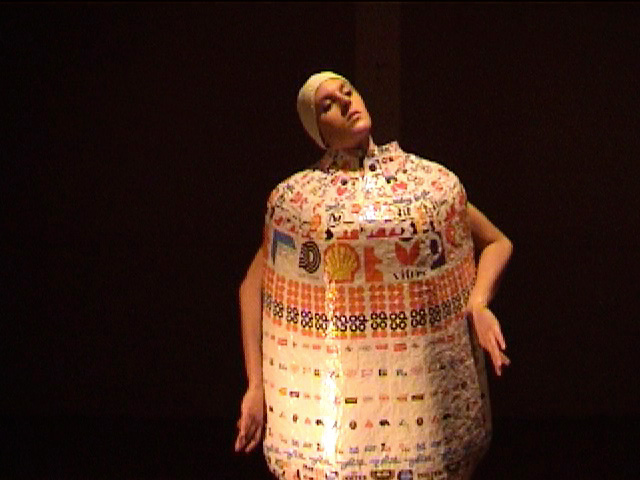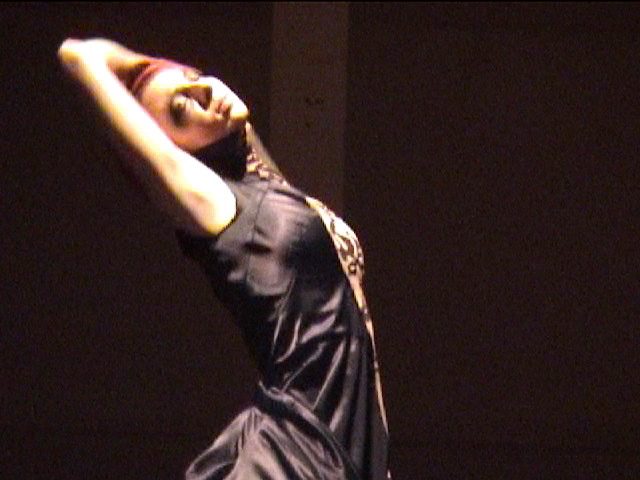Design And Performance Lab
Research objective
This cross-media lab explores convergences between textile/fashion design and movement, clothing and choreography, visual expression and film/photography, light and interactive design. As an experimental process, participants explore the intimate relations between textures in motion, design ideas for fabrics and wearables, within a film and performance studio context which allows the clothes to be used for performance interaction with physical camera and real-time processing using digital software that respond to body movement and sensory processing. The multiple processes join skin and fabrics, color. sound, and visualization technologies. The Lab will develop a series of protean models for sensual technologies in performance and in visual art/fashion.
I. Initial Formulation of Objectives of the Clothing as Sensual Technologies (2004)
To portray clothing as an extension of the human form and intimate functions, using bodily movement with structures and shape to deal with the transition through spaces and abstraction, and the evolution iof shape and color. Using the body as a mechanical axis for the expansion of evolving form and movements through garment pieces. Gradually: to explore clothing as intimate and extimate behaviors in a performative sense -- how do we use "sensual technologies" (clothing and cothing movement, responsive fabrics, screened fabrics) to express and communicate.
Ideas on clothing & choreography (Jo Cope)
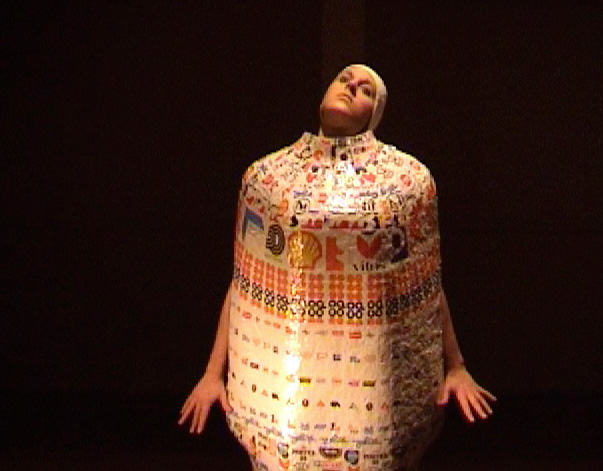

Outer core representation of the person's relationship to the world space around her (consumer experience), references to the packaged body, commodity, desirability, through color and symbols.
Middle stage white outer dress - the reflection and portrayal of the self through the interaction with the people that surround us. The outward projection of our self to the world.
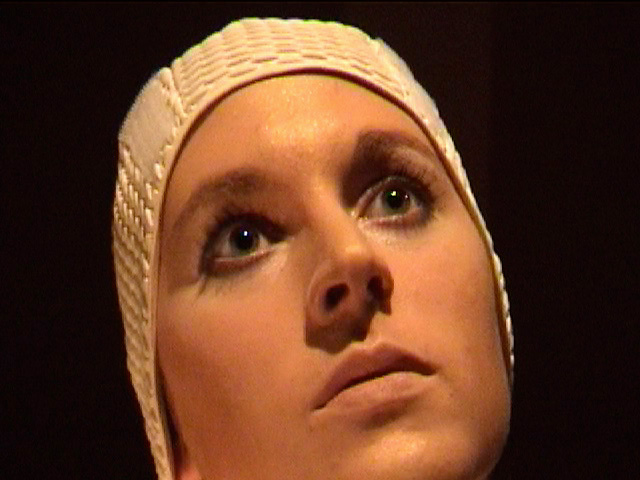
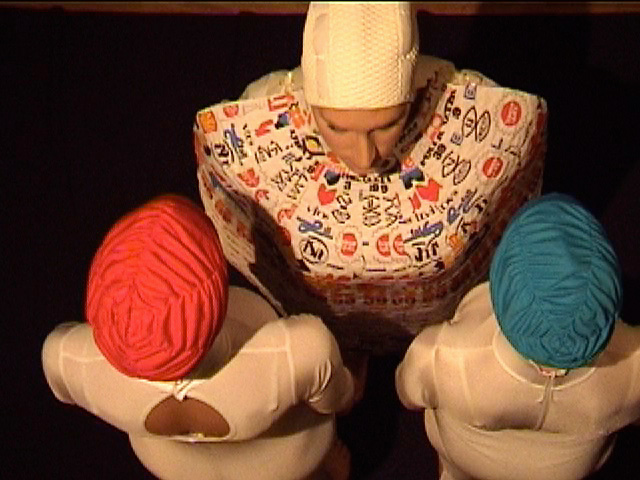
Changing head forms and step movement reference to the Japanese influence and symbolism within the piece, symbolic of the cutting of the hair, tradition linked/contrasted with westernization, the transition of change and suppression to freedom.
Dark into light series, with slight biblical reference (On the seventh day let there be light)
Opening garment - last stage of transformation, the revealing of the inner self, the deeper spiritual depth and beauty. Other reference points in the sequencing are to cubism, futurism, androgyny, and the conception of this movement sequence as an animation (animated film)
* * * * *
Yoon Bo Shim's photography from the workshop will be featured in a separate gallery.
II. Objective of the Clothing (Gemma Harrison)
dream split vision awakening with interior voice, crackling branches over water in the dusk
Marie and her hands under the yellow tree, motion responds to wind blossoms
in the distance one large pool, sky bottomed out and fallen over desert sand
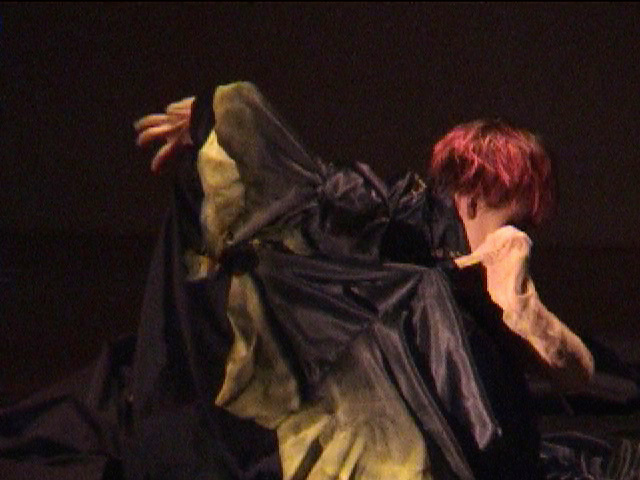
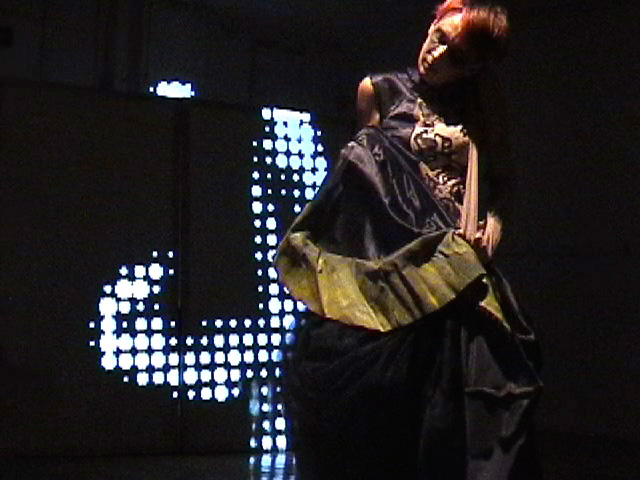
now light bubbles float across the street, she sees odd reflections of herself on the pavement
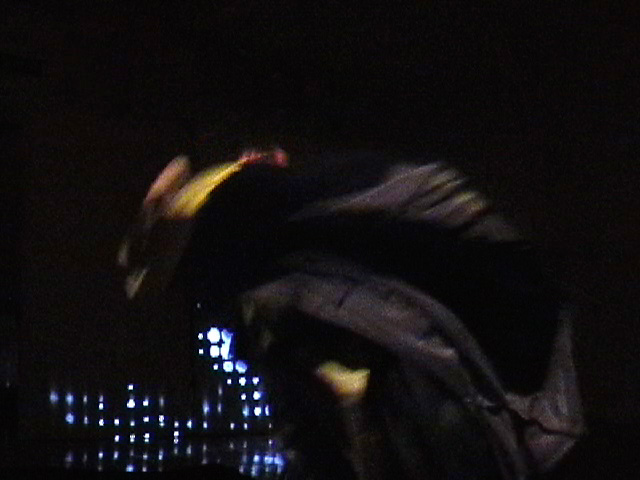

Notes on Harrison designs:
areas of research
Mental Illness and Schizophrenia
A play between physical and mental states (introspection/outward representation)
Transient states, (movements, pace, sequencing)
Abstract representations of the ‘altered’ mind and dissociated state (as in mental illness/schizophrenia). Compulsive/obsessive movements etc…
Sound and image distortions to represent chemical imbalances or the higher state of consciousness
Uses of symbolic imagery and props, e.g. ‘The Cosmic Tree (branch),’ toxic plants; dipped fingers (comment on threats and pollution in the environment) etc.
Future considerations:
Integration of exploration of the inner self such as singing, painting, drawing (with branch)
Exploration of design and emotional affect, looking at physical and mental conditions/perceptions
Play with introduction and saturation of colour (yellow) through editing.
* * *
Further notes on design and performance concepts will be published on this site.
Project directors: Johannes Birringer and Michèle Danjoux
Brunel University, London
